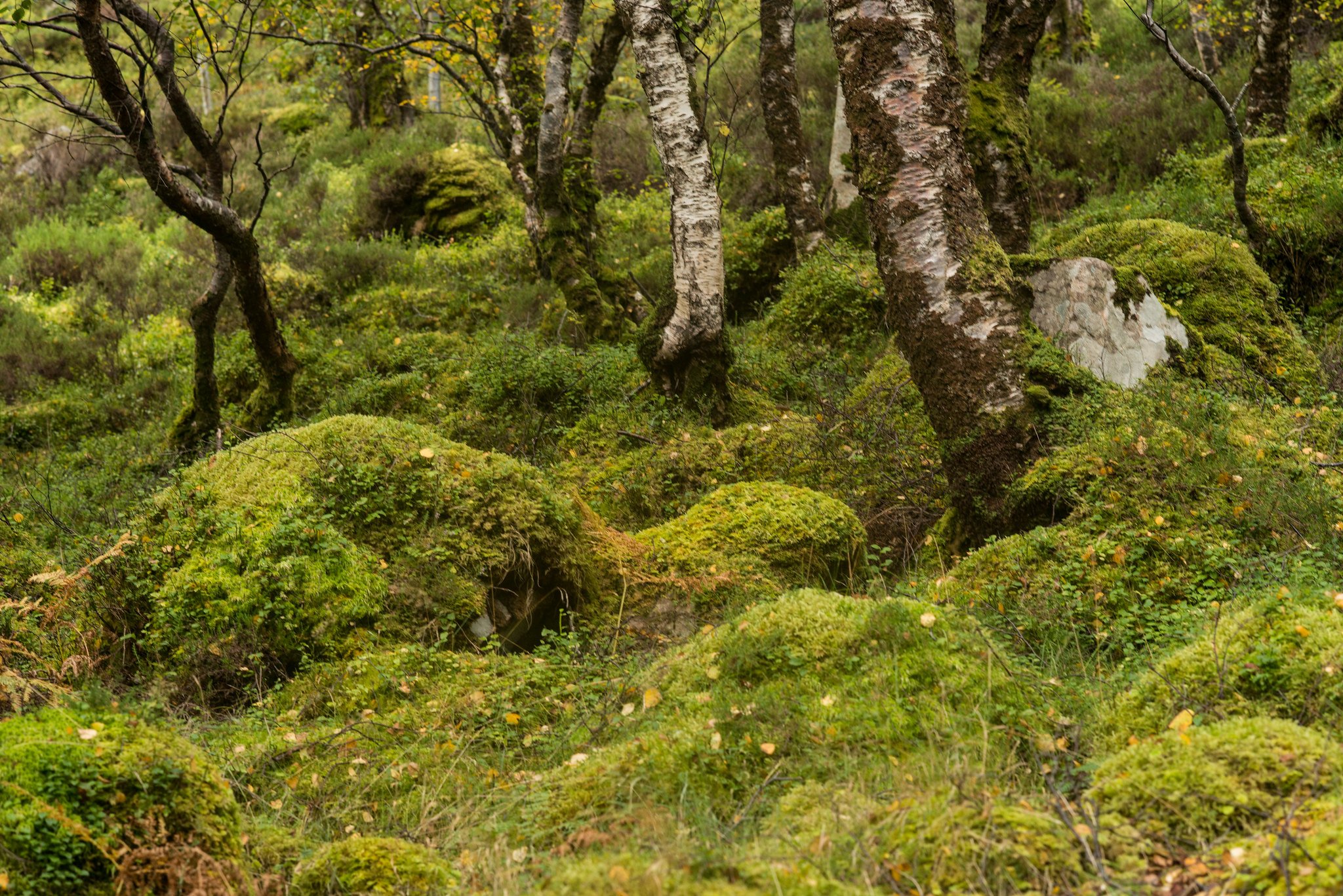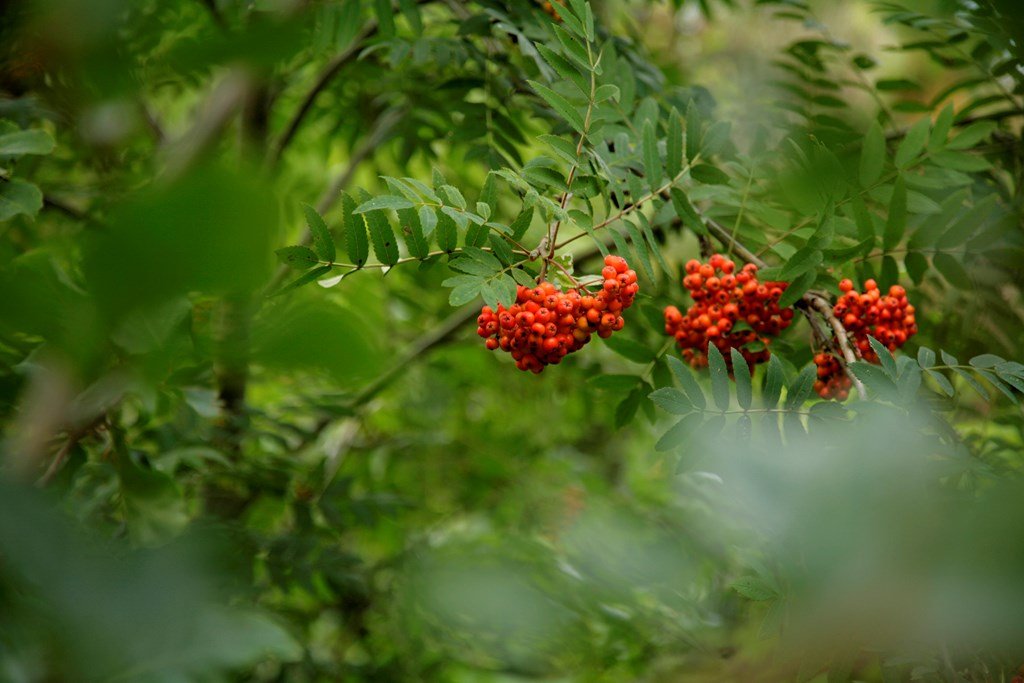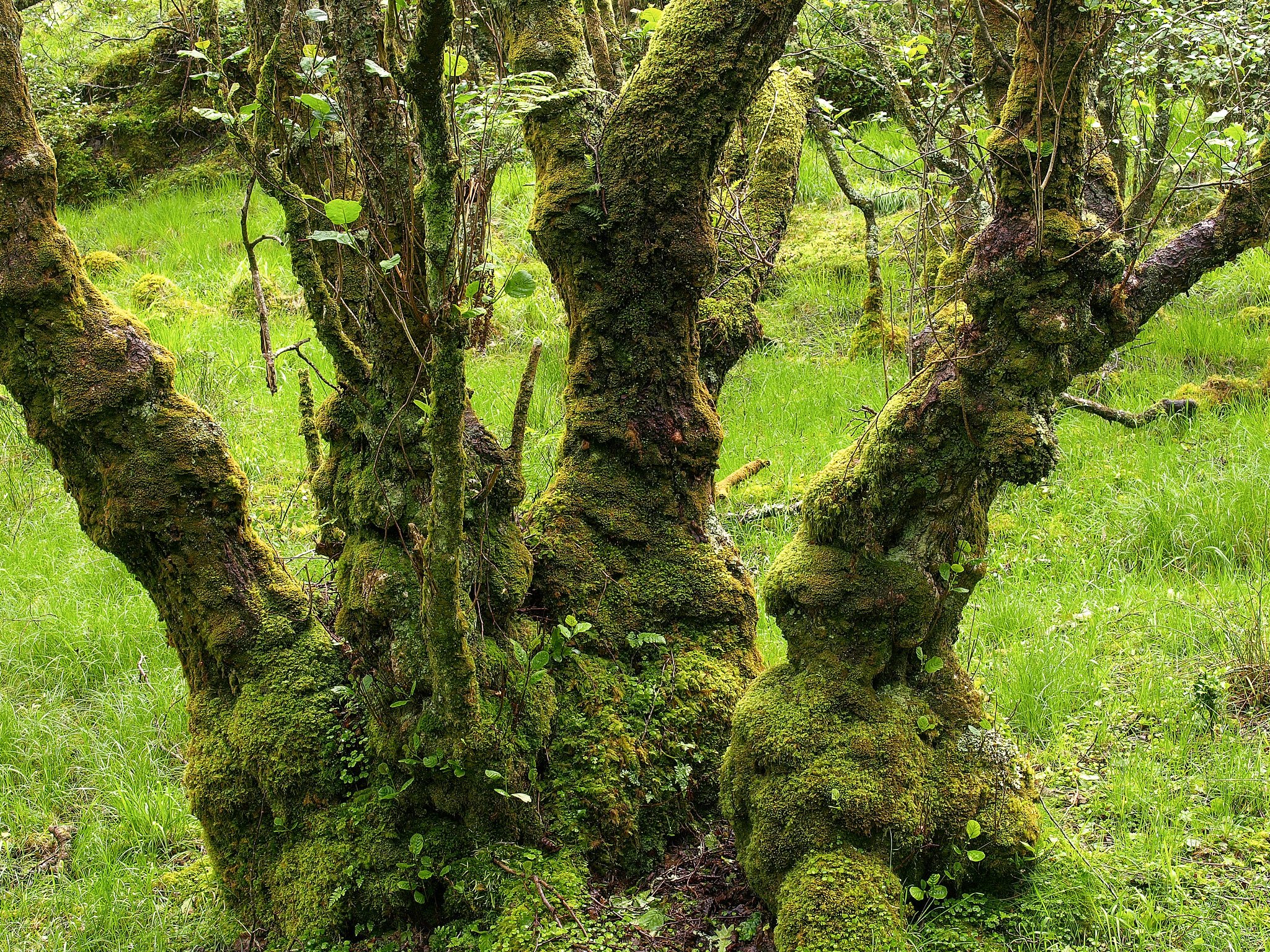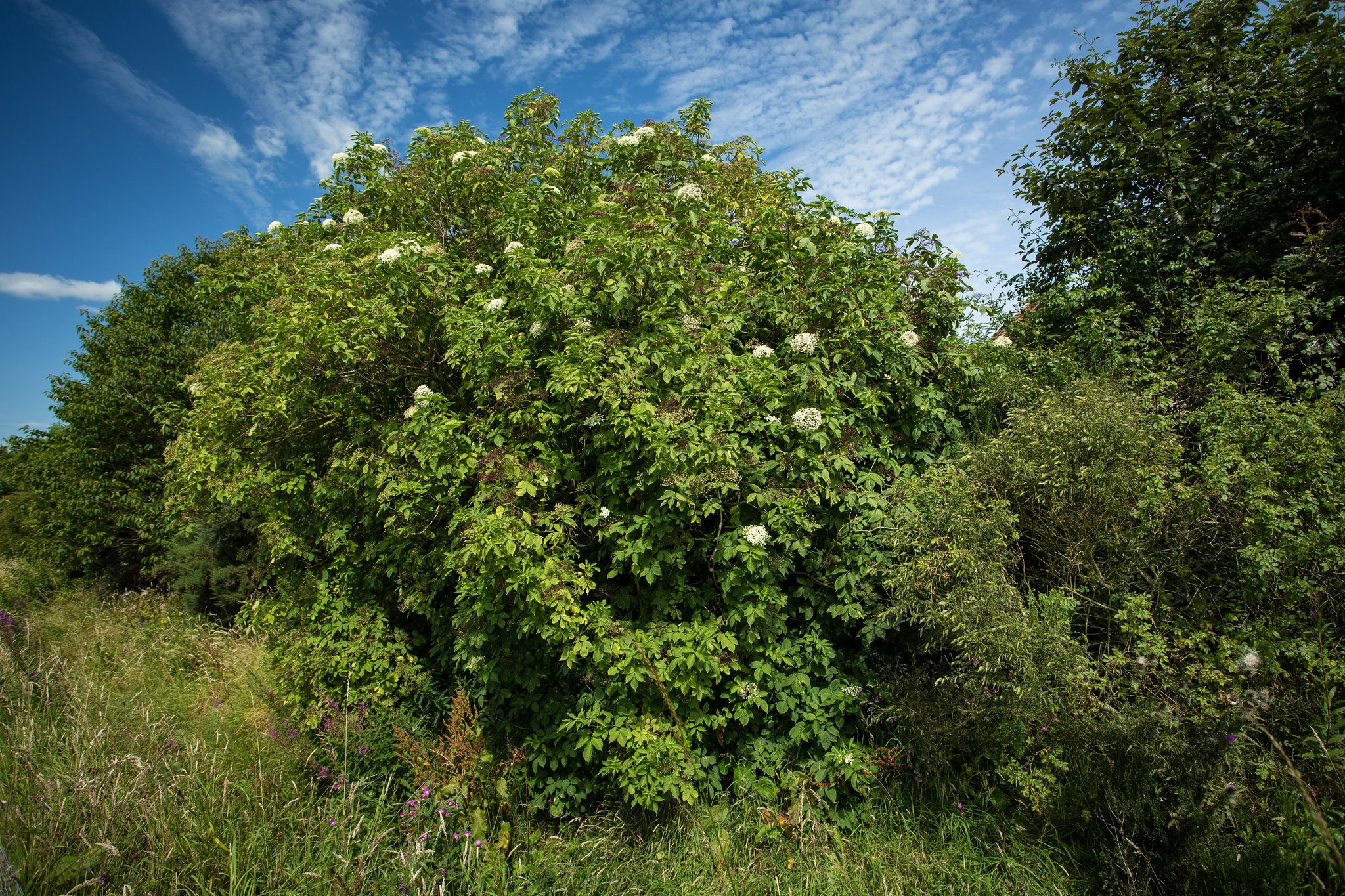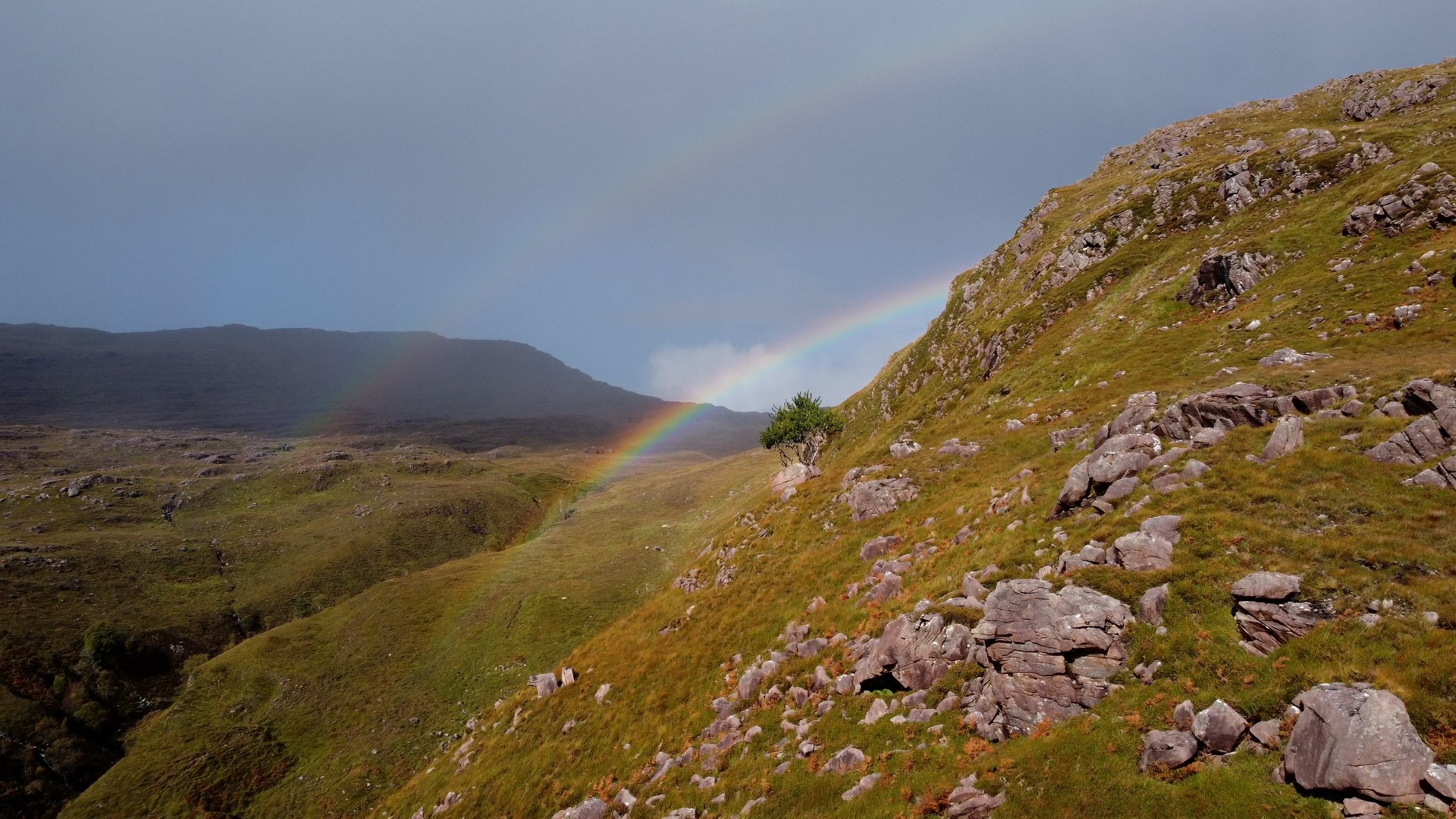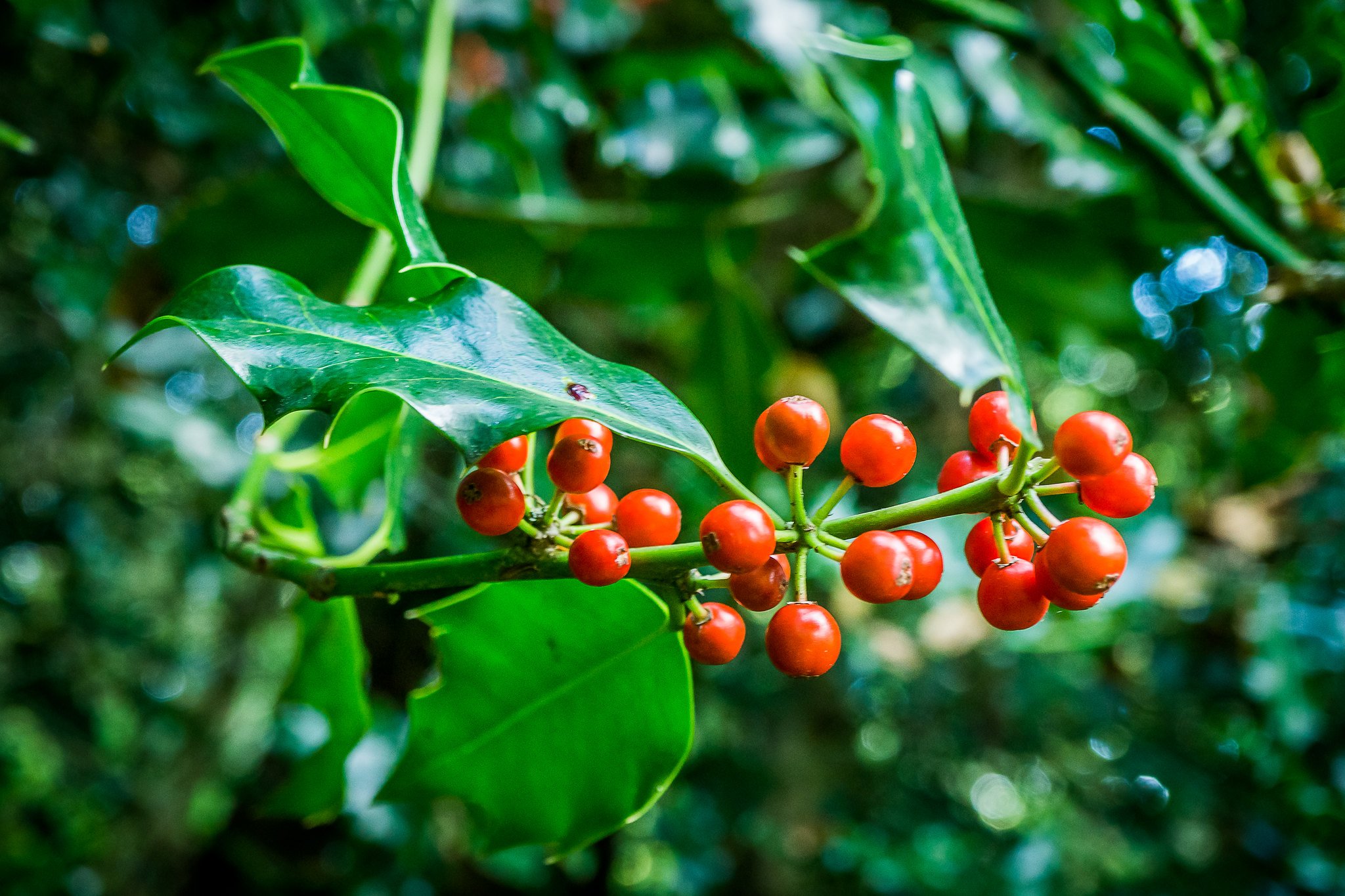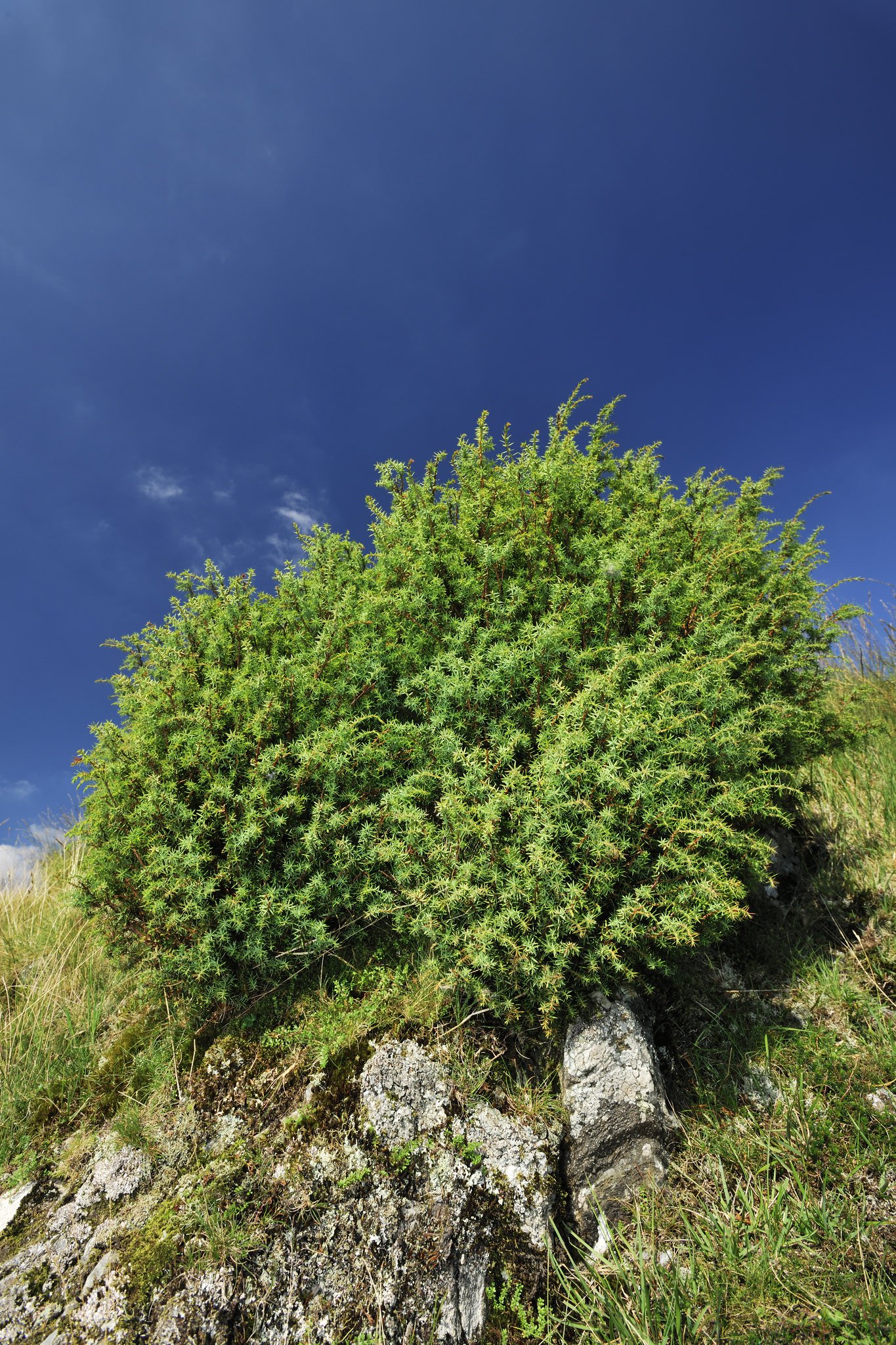Trees
Rainforest woodlands are truly magical places. Often remote, and sometimes difficult to access, that usually means you’ll find them empty of people and full of wildlife. But every woodland is also very different, and much of that starts with the trees.
Many areas of rainforest are classed as ancient woodland, which means they’ve been around since Scotland was first reliably mapped in 1750. They could be much older, however, and some are thought to be thousands of years old. In fact, some of our hazel woods could well be remnants of the oldest woodlands in Scotland.
Oak
Oak woodlands make up around a fifth of the total area of remaining rainforest. Many of these trees were historically ‘farmed’ for the charcoal and tanning industries, both of which came to an end around 150 years ago. In their natural state, the oak woods must have had an incredibly rich biodiversity, but even though they’re still recovering from their industrial past, they’re vital habitats for thousands of different species of plants, invertebrates, birds and mammals, some of which depend on the oaks completely for survival.
Their acorns, for example, are an important food source for squirrels and jays, both of which like to bury the nuts as a stash of food for winter, helping the oaks to spread. Purple hairstreak butterflies, wood warblers and many species of lichens, mosses and liverworts also depend on the oak trees of Scotland’s rainforest.
Hazel
Scotland’s Atlantic hazel woods are very special. They’re the oldest woodlands in the rainforest, and some stands could be several thousands of years old.
Hazels don’t usually form big, impressive ‘trees’ but rather grow as multiple stems, more like a shrub. That might give the impression that they’ve been coppiced, but this is just how hazels grow. Stems emerge from what’s called a ‘stool’ at the base, and these stools can live for hundreds of years.
Each hazel tree will have stems of different ages, which creates the perfect environment for many different types of lichens all at the same time. Some lichens, particularly leafy lichens, prefer the wrinkled bark found on old stems, while some, the ‘crustose’ lichens, prefer the smooth bark found on young stems.
These hazel stems all grow close to each other, and they move around in the wind, or when brushed by an animal or a person. As that happens, bits of lichens from the older stems break off and might be lucky enough to land on a younger stem next door. In this way, the hazel can form a sort of living conveyor belt, as the lichens that love the old bark are able to slowly colonise the middle-aged stems, while the lichens that like the young bark move to younger stems.
So because of the unique way it grows, hazel trees can support lichens in this cycle of growth for decades - as long as the tree isn’t cut! Several species of lichen are specialists of Scotland’s hazel woods and are found in few other places. The white script lichen is found nowhere else on the planet.
Of course, hazel trees are important for other wildlife as well, including mosses and liverworts, and several unusual species of fungi, including the hazel gloves fungus. They also produce large quantities of nuts each autumn, which feed birds and mammals.
Birch
The most common tree in Scotland’s rainforest zone is the birch, and there are three species to look out for: silver, downy and mountain. It’s common because birch trees are a pioneer species that produce huge quantities of seeds, and can quickly spread into new areas. The young trees also seem to be unpalatable for deer and other browsing animals.
Downy birch is a very important species for rare bryophytes and lichens in Scotland's rainforest, but all birch trees support lots of invertebrates, and are great for nesting birds. Birch trees also play host to several species of fungi, like the birch polypore, and fly agaric can often be found growing near to birch trees in the autumn, and form a symbiotic relationship with the trees through its roots.
You can find out more about birch trees in our blog here.
Ash
Ash trees are fast growing and one of the easiest trees to identify in winter because of their black, burnt-looking leaf buds. You’ll find ash growing in mixed areas of woodland in the rainforest, where it spreads through winged seeds that can travel quite far on the wind.
Ash trees are important in woodland because their leaves appear late and fall early, allowing lots of light to reach the forest floor and creating ideal conditions for many woodland plants. Sadly, these trees are also under threat from ash dieback, a fungal infection that kills younger trees and terminally weakens older ones.
The disease was first recorded in the UK in 2012 and has now spread across much of Scotland. It’s currently incurable, and it’s hard to stop the spread, though in some areas trees are being cut down and removed. There’s some advice for the public here: www.forestresearch.gov.uk/tools-and-resources/fthr/pest-and-disease-resources/ash-dieback-hymenoscyphus-fraxineus/
Scots pine
Scotland’s rainforest is usually associated with deciduous trees, but individual Scots pines are often found in mixed areas of rainforest. There are also two pine woodlands, at Beinn Eighe and Ben Shieldaig in the far north west, that are made up of Scots pines that have entirely adapted to growing within the rainforest zone.
Scots pines are distinctive, with their sculptural shape, and orangey-red bark, and as a tall tree it often sticks out in a mixed woodland. Its seeds and leaf buds are an important source of food for birds and red squirrels, and its bark can host many lichens, mosses and liverworts.
Willow
There are several different species of willow that you might see in the UK including white, grey, crack and osier, and all of them hybridise easily, which can make identification really tricky. However, the commonest willow you’re likely to find in Scotland’s rainforest is the goat willow.
Willows can thrive in very wet soils that wouldn’t suit other trees, so you’ll often find them on the banks of rivers or streams. They can also be found on steep slopes, as they have spreading roots that keep them firmly in place.
Image, Jill B Turner
Some willows, like the goat willow, can live for hundreds of years, and in the right conditions, can grow into sizeable trees. Goat willows are easiest to identify in spring, because of their fuzzy catkins, which are said to look like cats paws – leading to their other name, pussy willow.
Goat willows are important for pollinators, and can also play host to lots of different species of lichens. You can find out more about them in our blog here.
Wych elm
The impact of Dutch elm disease has been so great that few people in the UK will have seen a mature elm tree, certainly not recently. But in Scotland’s rainforest, a hardy type of elm called the wych elm is clinging on, saved by the remoteness of the woodlands in which it lives, and the chilly temperatures common to west Scotland. This environment just doesn't suit the beetles that spread the fungal infection that causes Dutch elm disease – though climate heating may change that.
Elm leaves can look similar to hazel, but they are rough to touch, and the flowers and seeds are quite different. Mature specimens remain rare, but they’re worth looking out for.
Other trees of the rainforest




